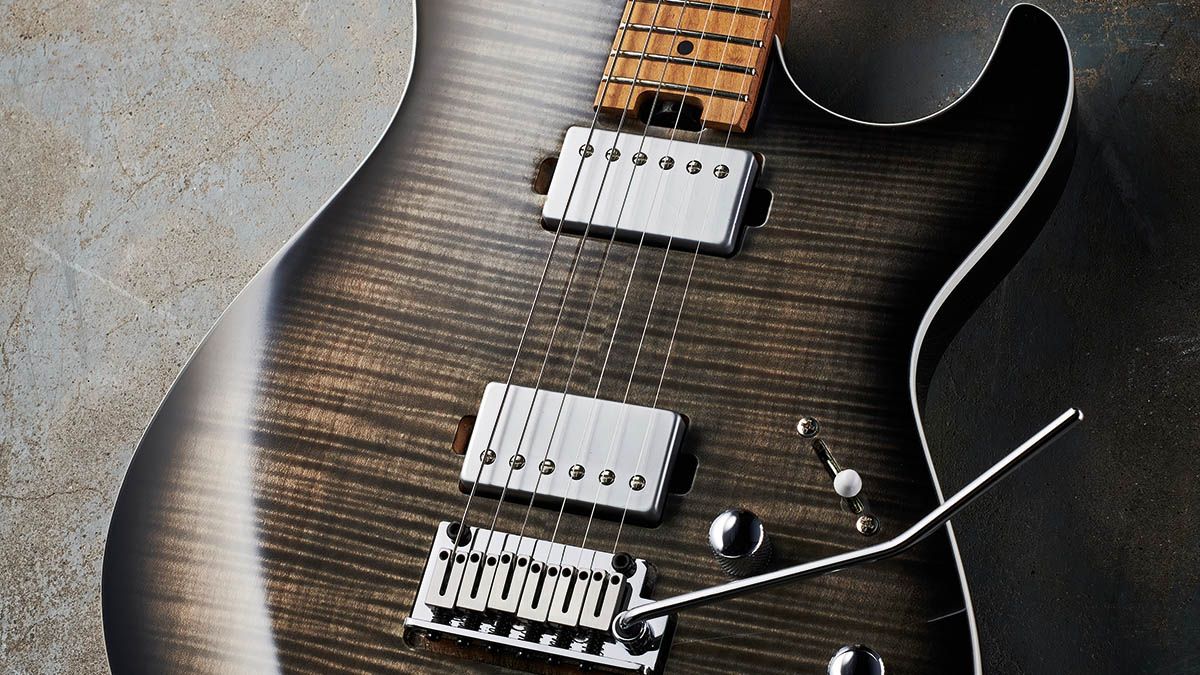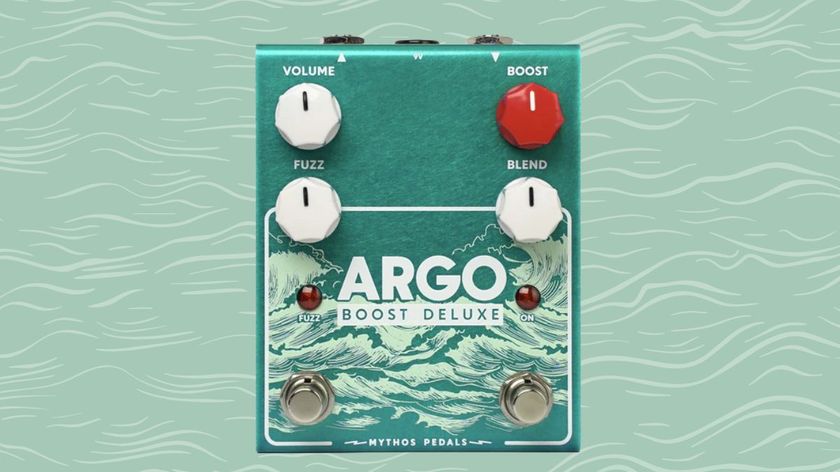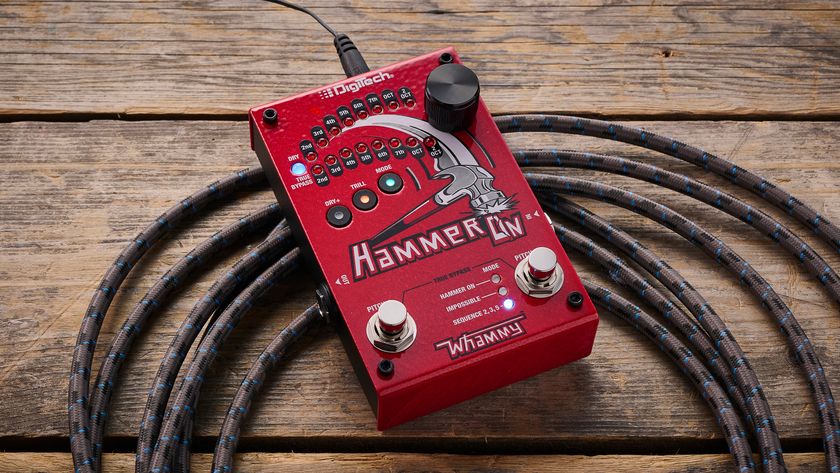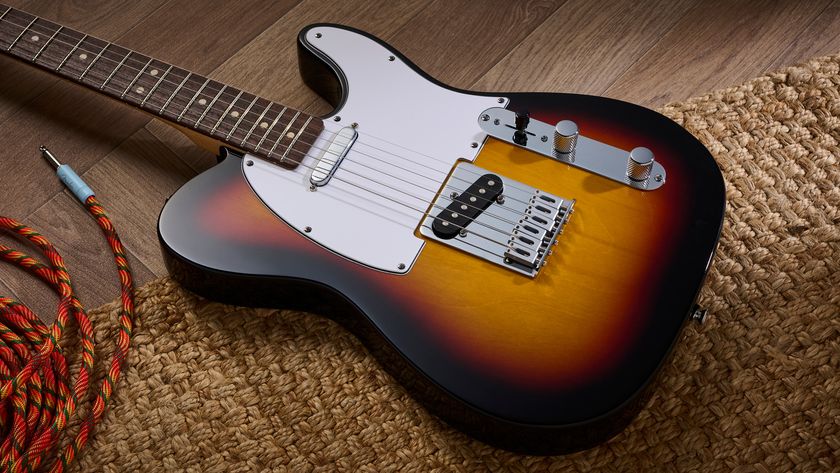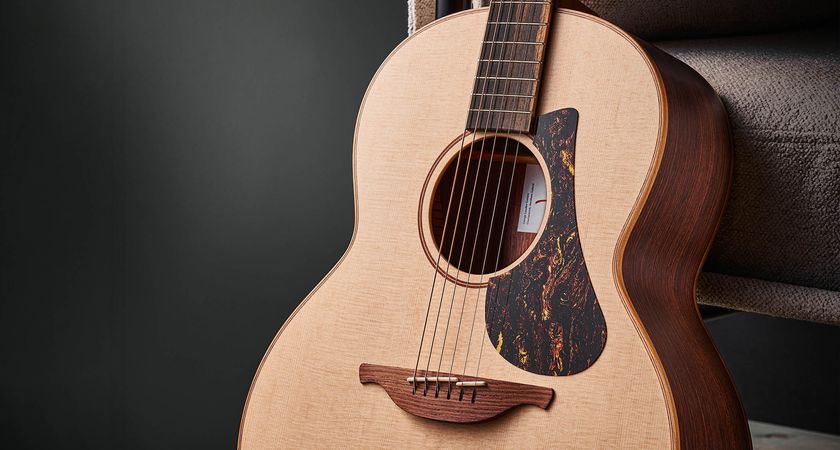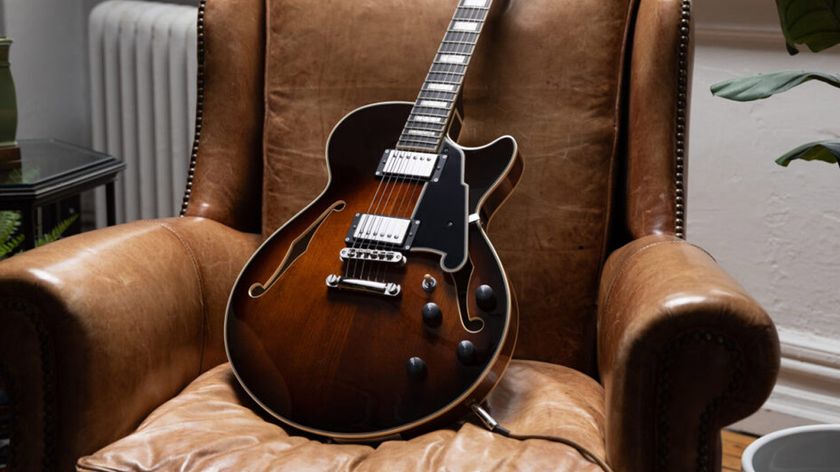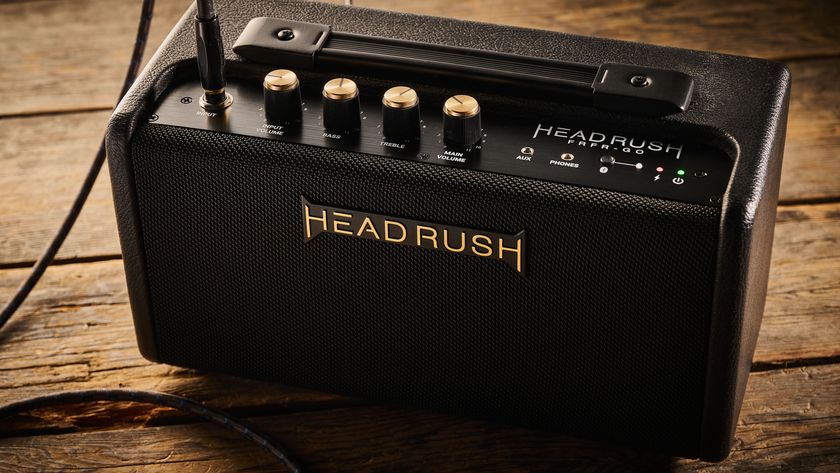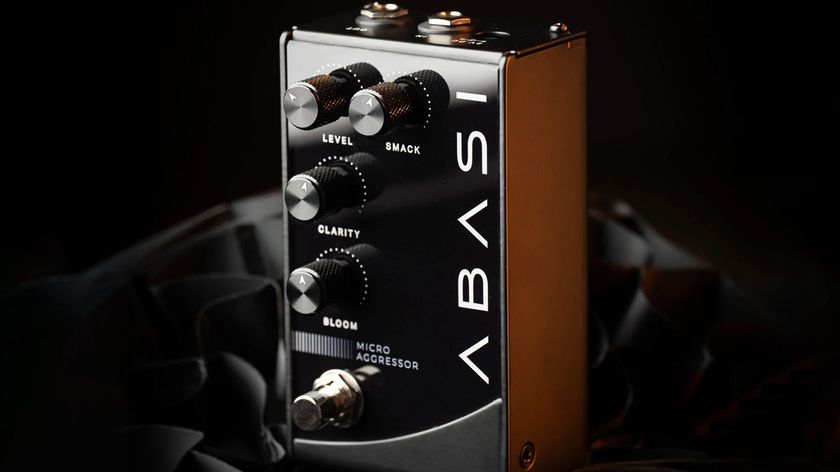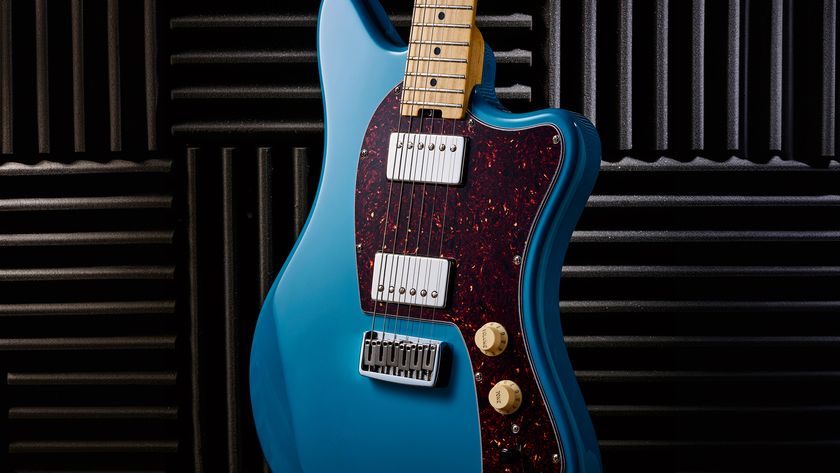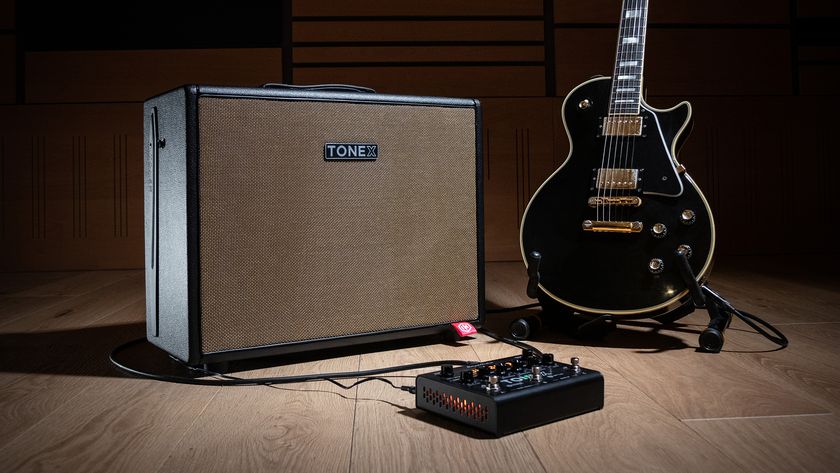Guitar World Verdict
Another hard-to-fault instrument from Cort, the G290 FAT II might not be the catchiest-named guitar we’ve had in our hands, but it’s hard to argue with at this price.
Pros
- +
Excellent build with quality hardware.
- +
Great neck and playability.
- +
Versatile ‘fat’ to ‘thin’ voices from the five-way pickup selector.
Cons
- -
No gigbag, but that’s about it!
You can trust Guitar World
It’s rather ironic that many of the mid-to-low price guitars we lust after are made by instrument manufacturer Cor-Tek, although its own brand is, we’d suggest, far from a first choice for many players.
Previously, we’ve been very impressed with the G300 Pro, not least with its stainless-steel frets, roasted maple neck and Seymour Duncan humbuckers.
The G290 FAT II – a V2 update of the model that was introduced a couple of years back – sits slightly below the G300 Pro, price-wise. It retains that guitar’s sleek offset Strat-inspired body outline, and is now made from alder instead of light ash. It has a figured maple ‘top’ that you can clearly see, but it’s just a veneer, whereas the G300 Pro goes for a basswood body with a 6mm maple cap.
The main upgrade to the new FAT II model is that, like the G300 Pro, we now have a roasted maple neck and fingerboard, although here it has 22 not 24 frets, which are standard nickel-silver not stainless steel.
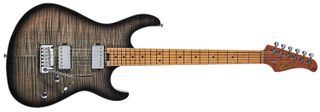
We get new glow-in-the-dark Luminlay side dots, too, and – like its previous version, and the G300 Pro – we have a compound 305mm to 400mm (12- to 15.75-inch) radius to the fingerboard face with a ‘spoke wheel’ truss-rod adjuster at the body end. Our Trans Black Burst review sample is new and comes with opaque black sides and back.
As we’ve come to expect, the build is very tidy. The neck is held with four recessed screws on a contoured heel, for example. The bright chromed hardware includes rear-lock tuners, with staggered height posts, and the CFA-III two-post six-saddle vibrato with push-in and tension-adjustable arm (a close cousin to Gotoh’s 510 vibrato) uses stainless steel for the saddles, top plate and shaped, deep-drilled block.
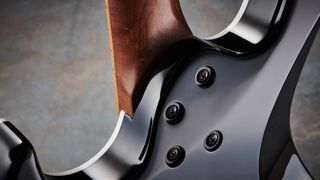
In fact, pretty much the only criticism we have is that the finishing in the vibrato back rout is a little scrappy, lighter in colour with some flecks of visible white polishing compound that hasn’t been cleaned.
The electronics are retained from the earlier G290 FAT: a set of Cort ‘Voiced Tone’ VTH77 covered humbuckers that are direct-mounted but height-adjustable thanks to a combination of hard foam and springs underneath each pickup. The five-way lever offers bridge, both and neck in positions 1, 3 and 5, while position 2 voices the outer single coils of both in parallel; position 4 does the same but with the inner coils.
Feel & Sounds
While the guitar does veer to the generic modern ‘SuperStrat’ side, this means it feels instantly comfortable and familiar. It’s a good weight for the style, slightly heavier than the G300 Pro, but that’s not surprising bearing in mind the different body wood.
The fretwork is superb from a pretty standard medium jumbo wire (approximately 2.73mm by 1.14mm high), and aside from just needing slightly lower string grooves in the nut, it’s hard to fault.

You might look at the spec and believe the fingerboard is too flat for you, but it doesn’t come across like that at all. The fingerboard edges are lightly rolled and it feels very similar to Fender’s Player Plus. In terms of depth it’s pretty mainstream, too – 21mm at the 1st fret and 23mm at the 12th, slightly thicker in the upper neck than the Player Plus.
It has what feels like a C-meets-D profile, whose fuller shoulders make it feel a little bigger than it actually is. The neck back is satin and will quickly burnish up to a dull sheen, or you can easily rub it with a fine Scotch-Brite pad or 0000 wire wool if you can’t wait that long.
The back-routed vibrato floats slightly above the face of the body, much like a PRS, and even with pretty energetic bends the tuning stability impressed once everything had settled in.
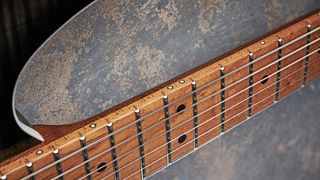
Although there is only basic information available on the pickups, like the G300 Pro with its Seymour Duncan JB/Jazz combo, Cort’s VTH77 set here captures a similar style: plenty of beef at the bridge and a more vintage-y voice at the neck. Cort tells us that ‘FAT’ isn’t an acronym: “It just means that the tone it creates is FAT.” With either humbucker engaged and a gainy amp, we’d call it fat, too.
Again like the G300 Pro before it, we have the parallel single-coil mixes in positions 2 and 4 on the five-way, the outer coils in position 2 giving a subtly wider brighter voice, more Tele-like perhaps than the subtly more Strat-like mix in position 4, but there’s not that much in it and all positions appear to be hum-cancelling, too.
While it veers to the generic ‘SuperStrat’ side, this means it feels instantly familiar
These are the ‘thin’ to the full humbuckers’ ‘fat’. You can’t voice either humbucker split on its own, which might be useful, especially as the bridge would probably split quite well like a JB. Nevertheless, the rock-to-funk duality here is perfectly valid: there are big arena rock sounds to be had from the bridge, an earthier bluesier voice from the neck, then you have those single-coil mixes for your Chic numbers.
A lot of mileage, in other words. New sounds? Not really. But, to our ears, the G290 FAT II is about getting the job done and – particularly when paired with a half-decent pedalboard – it pulls it off with style.
Verdict
The 2022 upgrades to this guitar are very on-trend, and the combination of the different body construction and pickups gives it a slightly different sonic spin compared with the award-winning G300 Pro.
It’s a guitar with great potential for the studying player or anyone needing to cover a lot of ground, with plenty of potential for upgrading, too, not least with some name pickups. That said, its voices are surprisingly good, especially the big fat ’buckers.
On the negative side, it doesn’t have the cachet of some of the trendier brands out there, such as Ibanez or PRS, but the build quality is certainly on a par and just as valid. Good craft and good sounds at a price that’s temptingly affordable.
Specs
- PRICE: $1,149 / £639
- ORIGIN: Indonesia
- TYPE: Offset double-cutaway solidbody electric guitar
- BODY: Alder with figured maple veneer top facing
- NECK: Roasted maple, bolt-on
- SCALE LENGTH: 648mm (25.5”)
- NUT/WIDTH: Graph Tech Black Tusq/41.8mm
- FINGERBOARD: Roasted maple, compound 305-400mm (12‑15.75”) radius, black face dots with Luminlay side dots
- FRETS: 22, medium jumbo
- HARDWARE: Chrome-plated Cort CFA-III 2-post 6-saddle vibrato with push-in arm, Cort staggered-post rear locking tuners
- STRING SPACING, BRIDGE: 52.5mm
- ELECTRICS: Cort ‘Voiced Tone’ VTH77 neck and bridge direct mount covered humbuckers, 5-way lever pickup selector switch, master volume, master tone
- WEIGHT (kg/lb): 3.67/8
- OPTIONS: None
- RANGE OPTIONS: The G Series starts with the new G110 (from £189); all are HSS except our review model and the G300 Pro (£799), which are both dual-humbucking
- LEFT-HANDERS: No
- FINISHES: Trans Black Burst (as reviewed), Antique Violin Burst and Bright Blue Burst – gloss body and headstock face, satin neck
- CONTACT: Cort

Dave Burrluck is one of the world’s most experienced guitar journalists, who started writing back in the '80s for International Musician and Recording World, co-founded The Guitar Magazine and has been the Gear Reviews Editor of Guitarist magazine for the past two decades. Along the way, Dave has been the sole author of The PRS Guitar Book and The Player's Guide to Guitar Maintenance as well as contributing to numerous other books on the electric guitar. Dave is an active gigging and recording musician and still finds time to make, repair and mod guitars, not least for Guitarist’s The Mod Squad.
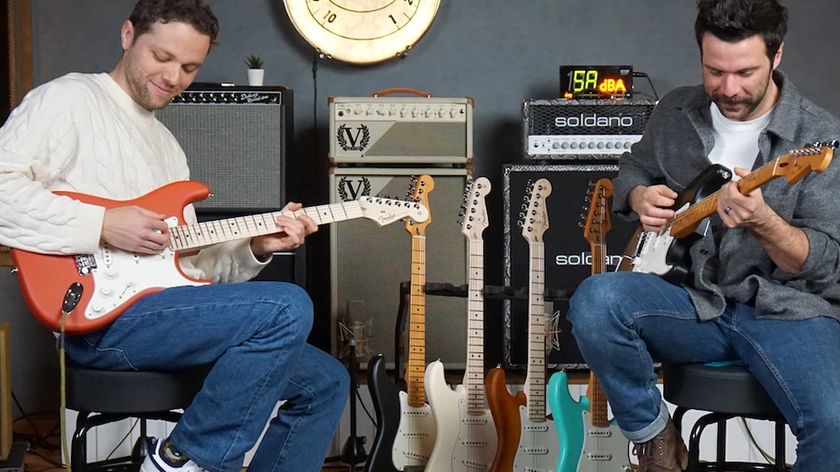
“Satin Stratocaster dreams”: Fender and Thomann have produced two new exclusive Stratocaster lines – and their prices rival existing US and Mexico-made models
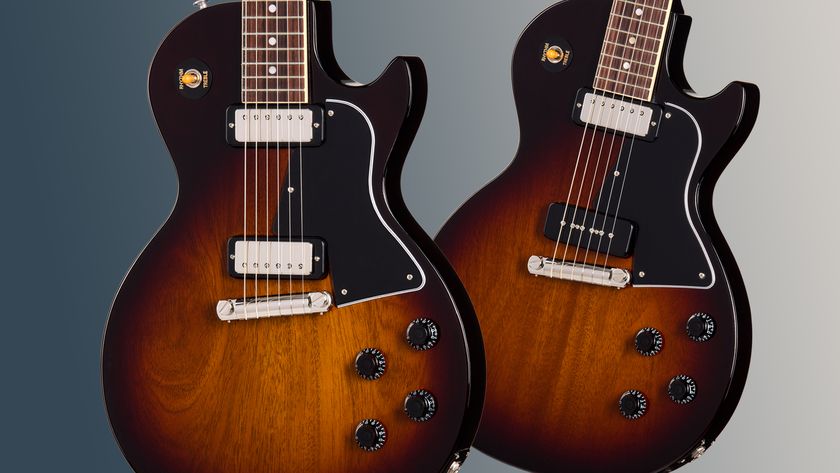
“A new take on the classic”: Gibson gives its Les Paul Special an ultra-rare pickup overhaul with new Mini Humbucker models
